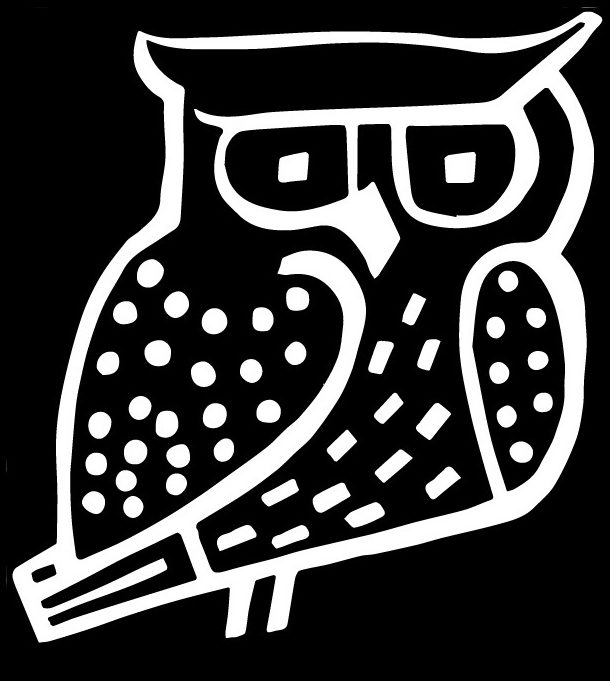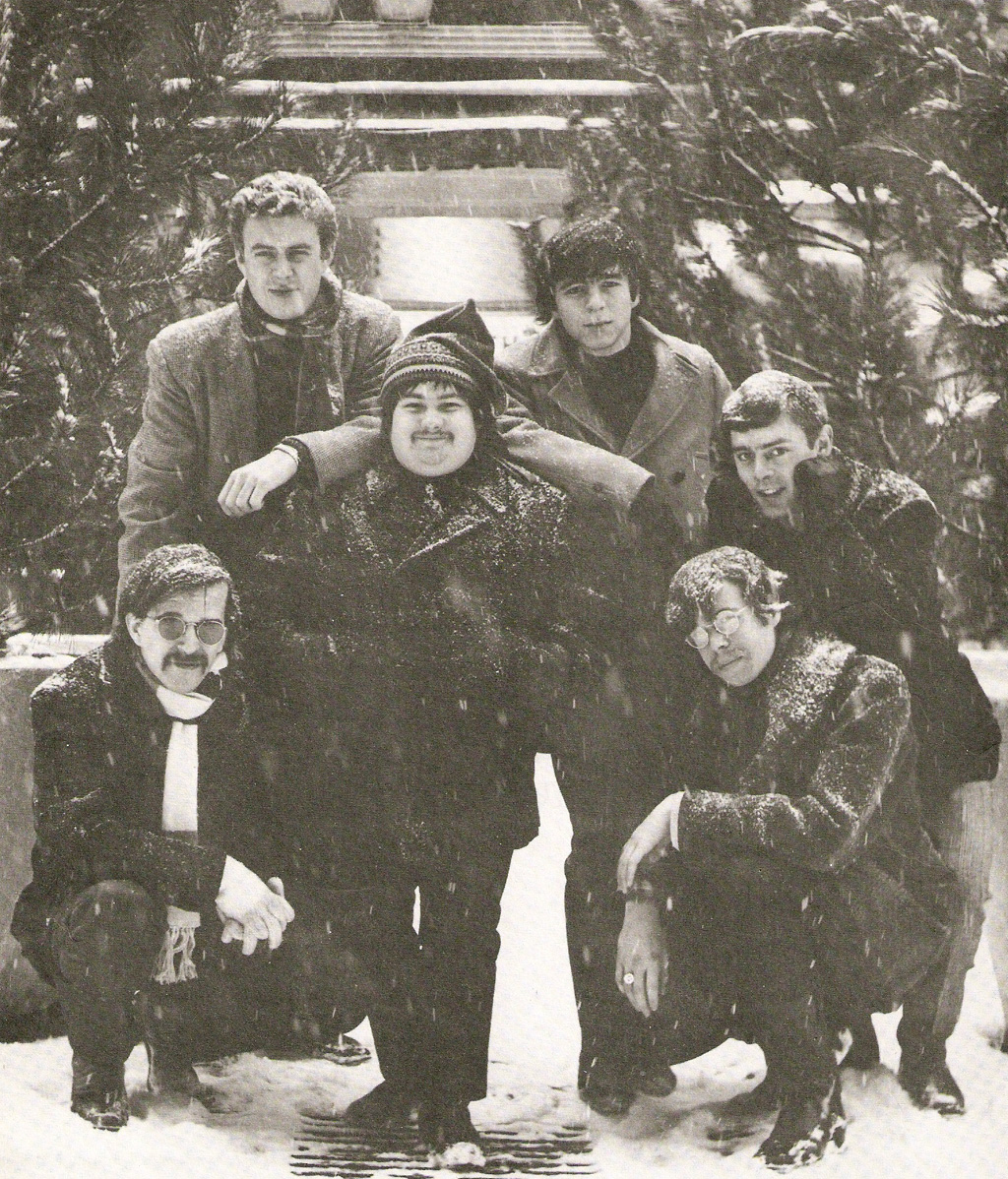
From February 4-7, 1965 Carol Robinson and Amos Garrett were the first performers to play at the new Le Hibou. The week before they also performed at the old Le Hibou on Bank Street, so they closed one venue and opened up another. The following two weeks featured theatre: “Victims of Duty” by Eugene Ionesco. Cast included Gerard Gravelle, Taunia Gravelle, Robert Whelan, Noel Almay, Elizabeth Langley, and Jean Honeywell. I handled the direction. In retrospect I really don’t know how I managed to rehearse the play, manage the move and the coffee house, and carry a full-time job at the CBC. I suppose that in those days one didn’t think about it, it had to be done, and we did it.

Generally speaking I had a very good relationship with the performers. Most were very professional, although some lingered a little too long at the Chateau Lafayette pub around the corner, and we had to remind them occasionally that a crowd was waiting for their second set. But that was the exception. Some were cantankerous. Gord Lightfoot, who always drew a large crowd, would fuss for a long time in the adjustments of the sound system. Then in the middle of the first song, he would stop and snipe about the sound levels being all wrong. I happened to be at the sound one evening and it happened to me. Maybe he didn’t realize that the sound would be different with a room full of people. Maybe it was just his perfectionist bent, or maybe it was a way to defuse his nervousness. Despite this small idiosyncrasy he was a wonderful singer song writer.

I also recall the first time Bruce Cockburn performed at Le Hibou. The arrangement, as usual, was a base amount versus a percentage of the gate. To my surprise, on his first night his brother was at the door counting every paying customers as though our staff was not competent or was intent on cheating. I was outraged at the time, I had no idea who instituted it, but I quickly put a stop to it. Other than that small episode, everything was smooth after that. Bruce subsequently became a regular performer at Le Hibou as a single, or in with The Children, Flying Circus, Olivus and 3’s a Crowd. He continued to perform while Le Hibou was managed by John Russow, and then Pierre-Paul Lafreniere. Then there was Peter Hodgson, always brimming with enthusiasm and joy, who played as a single, with Neville Wells as Nev and Pete, as Sneezy Waters, as A Rosewood Daydream and as Sneezy Waters and his Excellent Band.
Other Ottawa performers also played extensively at the club—Bill Stevenson, solo or with bands or his jazz quartet; Bill Hawkins with Heavenly Blue, The Children and other interfusions. Whenever I was stuck with a cancellation, one of the two Bills would always be able to fill in.

In the new place we had a mezzanine above the kitchen. The previous owner, Hobby House, had used it as a small office. It had a large opening which overlooked the whole room. I presume that might also have been part of his anti-theft strategy as there were no anti-theft cameras then. Sonny Terry and Brownie McGhee were happy to use the room to relax and meet people. I had put in a sofa and an arm chair which were much more comfortable than the hard chairs in the main room. I would go and chat with them and sometimes they would complain about the industry, how the young rock bands would use their material without giving them credit. They would also complain that they had been playing for years making little money and these bands using their material would make ten times more, which they found quite unfair, and I quite agreed. (I would hear the same complaint from some of the blues bands.)

Sometimes Sonny and Brownie would tear at one another very much like a long time old couple. I recall on an early summer evening, Penny and I went up for a chat. It was hot and Penny had a leather coat. Brownie queried “Why wear a leather coat on such a hot day?” To this Penny laughingly answered. “Oh but I am not hot, I am nude underneath the coat.” Sonny, who is blind, interjected, “Oh, oh, oh, come here, come closer,” as he extended his arms, hoping to grasp Penny as she deftly pirouetted away. Everybody had a great laugh and the loudest laugh came from Brownie. I always enjoyed having them at the coffee house. They were quite down to earth, most professional, always gave a strong performance and were very amiable and drew consistent crowds. Their closing song “Walk on” has always impressed me—even though I’ve seen it many times. I was always touched seeing Brownie playing his guitar followed by Sonny, his hand on Brownie’s left shoulder, as they walked through the crowd towards the back of the room singing away. With any other artists it would be close to melodramatic, but with them it was always authentic and touching.
At one time I went to the airport to pick up Jerry Jeff Walker (Mr Bojangles) and when we arrived in Centretown, I told him that we were in the centre of Ottawa. He was astonished. “But where are all the tall buildings?” he exclaimed. I had to explain that, this being the capital of Canada, there was a by law prohibiting any building in the vicinity of Parliament Hill to be any higher than the Peace Tower.

1965 happened to feature aboriginal singers. Donald K Donald Agency of Montreal, with whom I dealt for Montreal performers, suggested that I hire this new Aboriginal singer Willie Dunn. Willie was the first aboriginal performer to broach aboriginal issues, and he did so in a very forceful voice. Later, Buffy Ste Marie came along with equally great passion, but her songs which she wrote and her poignant delivery was much more powerful. With her high cheek bones, long flowing black hair, vibrant eyes, and strong personality augmented by her aboriginal accoutrement, she commanded attention. Buffy demonstrated passion, sometimes anger in her songs about Aboriginal issues and history, but off stage she had a very gentle personality. Budge Crawley, of Crawley Films in Ottawa, ironically was in the process of doing a documentary film extolling the virtues of Saskatchewan for the government of that province. Buffy was born there and he jumped at the chance to film her at Le Hibou. I agreed and she performed in the afternoon in front of our brick wall. Odetta was also another politically engaged singer who had a powerful voice, and was also a powerful preacher. Sometimes she preached even more than she sang.




3 replies on “The Performers”
Do I remember correctly that Tim Hardin performed at Le Hibou in the autumn of 1968? I have this vague memory of seeing him perform – If I Were a Carpenter – at that time. Bobby Darin’s cover version had charted on Billboard previously (in the autumn of 1966), but until I saw Hardin perform it hadn’t realized Hardin wrote it.
Oct. 29- Nov 3, 1968, Tim Hardin
Phil Ochs put on a great show playing all his favorites: Outside of a Small Circle of Friends, Flower Lady, The Crucifix and Draft Dodger Rag, of course. Being a big Dylan fan (they were estranged some years earlier but Phil still like Bob), I hung around to ask him questions. By then, he needed a drink and invited me up to the green room to chat, then after to the second show! I still have the poster from his appearance.
I learned to play guitar as a teenager, and took the bus to Le Hibou on Sunday afternoons to learn fingerpicking and other styles, and I often attended the Sunday evening hootenannies.